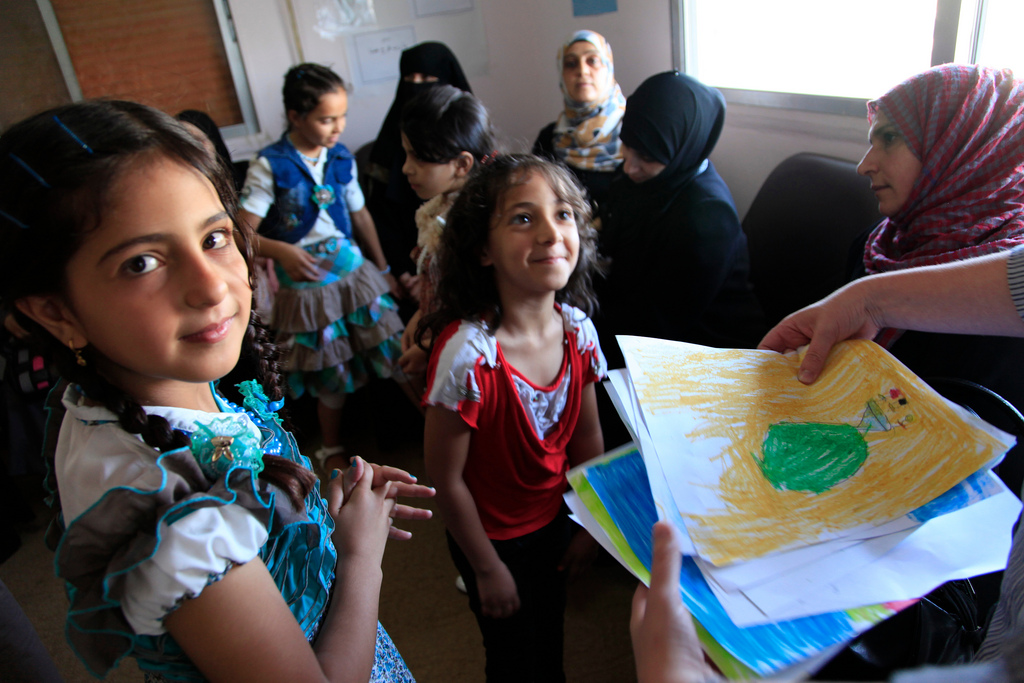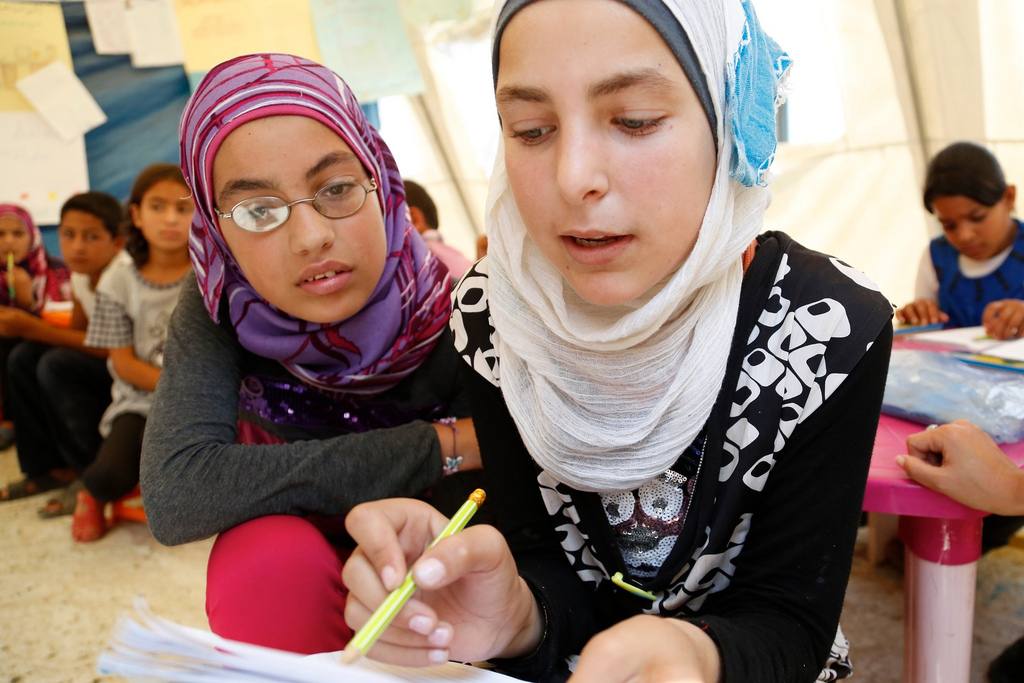Why Can't America Take as Many Refugees as Sweden?
By:
In the United States, refugees are a controversial subject. Donald Trump Jr. has compared Syrian refugees to a “bowl full of Skittles,” asking if only "three would kill you" would you still "take a handful?" His father, meanwhile, just told people in Minnesota that the refugees in their state had been a "disaster." At the same time, the U.S. government announced this summer that it met its goal of admitting 10,000 Syrian refugees in the last fiscal year, which is hardly anything at all, relatively speaking, but enough for some people to get mad.
In Scandinavia, things are a little different.
In 2015, Sweden granted asylum to at least 32,000 refugees, most of them Syrian. This amounts to just over 0.3% of the country’s population, which is a huge increase for just one year. If the U.S. were to accept the equivalent of a 0.3% population increase? That would mean over 950,000 million refugees — about the population of San Jose, California.
Of course, Sweden is far from perfect—it has yet to accept the vast majority of the more than 160,000 people who applied for asylum last year. But compared to the U.S., Sweden is doing something right. What would it take, then, for the U.S. to accept a much larger influx of refugees, and is there anything to be learned from the Swedish model?
ATTN: put those questions to four experts in the U.S. who have dealt with integrating refugees.
Perhaps one of the first concerns that comes to mind for successful integration is jobs.
How can we help refugees become self-sufficient and in turn help their new communities?
There is evidence that local economies, particularly de-industrialized towns such as Columbus, Ohio, actually benefit economically from the presence of refugees and immigrants, and refugees tend to find jobs—albeit not always well-paying jobs—fairly quickly.
Peter Missouri, communications director for Massachusetts state senator James B. Eldridge, said the best approach would be to gather business and government stakeholders together, on the federal level, to disperse this economic force in a way that helps everyone.
“There are sectors in many different markets where there are shortages and those can be filled by refugees,” Missouri told ATTN:. “How about we start talking about it from that perspective, from an economic development perspective and community development perspective?”
 Russell Watkins/Department for International Development - flickr.com
Russell Watkins/Department for International Development - flickr.com
Then there’s the question of housing. In Sweden this is one of the biggest barriers, as major cities like Stockholm have severe shortages. It is often smaller towns that are asked to pick up the slack. The same is true for the U.S.
Malkit Shoshan, a lecturer at Harvard’s Graduate School of Design who has worked on the relationship between architecture and human rights, told ATTN: “Many cities all over the world suffered in the past decades from a negative growth. These towns are built and sophisticated enough to offer a comprehensive environment for integration of migrant communities.”
“It is a matter of common sense that if there is infrastructure already in place and it is vacant, it should be considered as a valuable resource for settling refugees.”
However, Anna Crosslin, CEO of the International Institute in St. Louis, Missouri, is skeptical. “Smaller communities are more homogeneous and less welcoming to outsiders," she noted, "even though they would benefit from population growth.”
It’s not as simple as dropping a few dozen refugees off in a town or city and providing them with housing, either. David Lubell is the founder of Welcoming America, an organization that works with communities in the U.S. to facilitate the smooth incorporation of refugees and immigrants. He spoke of the need for multi-sector planning, a strategy his group has implemented in communities that anticipate taking in large influxes of refugees.
“Even in Europe, when you’ve got a large enough number, the government can’t do it all,” he said.
In Boise, Idaho, a successful model has been to bring schools, government agencies, the business community, the religious community, and the immigrant community together to brainstorm and solve shared challenges together. Yet, he said, thoughtful planning can only take place if the community's fears have been addressed.
Lubell gave the example of the small town of Shelbyville, Tennessee, which faced a large wave of Mexican immigrants and then Somali refugees. The organization found local leaders from different sectors to help educate the community.
“It was a lot about pastors opening up their doors for dialogue and conversations,” he said.
“You can have all the English classes or Swedish classes in the world," Lubell said, "but if people in the community don’t know you, don’t trust you, and don’t understand why you’re there, it’s going to be really hard to become fully part of that community."
According to Missouri, communication and exposure are crucial components in facilitating that.
 Russell Watkins/Department for International Development. - flickr.com
Russell Watkins/Department for International Development. - flickr.com
“Unfortunately the only way to [combat stigma] is for people to be here and for local population to be exposed to refugees and see that there is nothing to fear,” he said. “You can’t wait until refugees are here to start debunking these myths."
All the experts who spoke to ATTN were adamant about the U.S.’s ability to accept more refugees, given the political will. While the Scandinavian model provides for basic needs like housing, language services, and even some mental health services, the U.S. model is largely “laissez-faire,” according to Missouri. But again: where there's will there will be resources.
“Obviously we’re not taking in nearly as many refugees [as Sweden], but it’s not because communities don’t want to take in more,” Lubell said. “It’s a federal challenge, a federal issue… We work with over 300 communities across the United States, most of whom would take in more if it were an option."
But some are skeptical. "I am afraid that the main issue here is not the design capacity nor spatial or resources scarcity," Shoshan said. "It is a matter of mindset.”
Update: This story has been updated to correct a mathematical error. The U.S. would need to take in 950,000 refugees for its rate of acceptance to match Sweden's, not 9.5 million.
